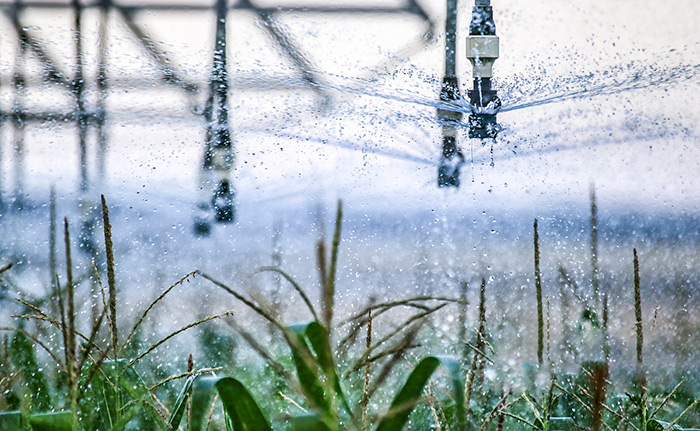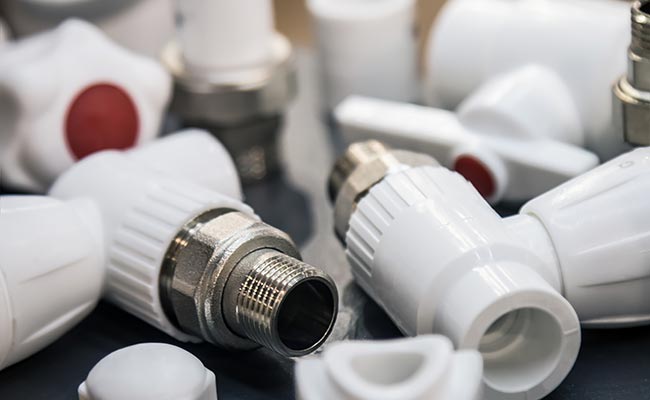Is your pump losing its prime? A failing foot valve leads to system downtime and costly pump damage. Choosing the right material, like PVC or brass, is your first defense.
For most water, irrigation, and chemical applications, PVC foot valves are better due to their corrosion resistance and lower cost. Brass is superior for high-temperature applications, deep wells, or where extreme durability against physical impact is required.

Simply choosing a material is not enough. The best purchasing managers, like Carlos, know that the real value lies in understanding the specific advantages and disadvantages of each option. Keep reading, because this deeper knowledge is what protects your investment and your customers’ trust.
Which is better brass or PVC valves?
Stuck between traditional brass and modern PVC? Making the wrong choice can lead to premature system failure and expensive replacements. Let’s clarify which one is right for you.
PVC valves are better for applications involving cold water, corrosive fluids, and tight budgets. Brass valves are better for hot water, high-pressure gas or air lines, and where regulations for potable water systems demand metal components.

In my experience at Pntek, I’ve seen customers save thousands on projects by switching from brass to PVC where appropriate. A distributor like Carlos can build significant competitive advantage by guiding his clients to the most cost-effective and reliable solution, not just the most traditional one. The choice comes down to a few key differences.
Material Properties
The core of the debate is the material itself. Brass is a metal alloy, while PVC is a polymer. This leads to fundamental differences in performance. PVC is completely immune to rust and corrosion from water and a wide range of chemicals, which is a major failure point for metals. However, brass can handle much higher temperatures and pressures without deforming. Brass is also much heavier and more resistant to physical impact.
Cost and Installation
This is where PVC truly shines for a purchasing manager. PVC valves are significantly cheaper to manufacture and purchase. Their light weight also translates into lower shipping and logistics costs for every order Carlos places. Installation is also simpler and faster with PVC, typically using solvent cement, which creates a permanent, leak-proof bond. Brass requires threaded fittings and sealant, which is more labor-intensive.
Key Differences Table
| Feature | PVC Valves | Brass Valves |
|---|---|---|
| Corrosion Resistance | Excellent | Good, but vulnerable to some chemicals |
| Temperature Limit | ~60℃ (140℉) | > 200℃ (400℉) |
| Cost | Low | High |
| Weight | Light | Heavy |
| Installation | Simple (Solvent Weld) | More Complex (Threading) |
What is the best type of foot valve?
Think all foot valves are the same? A poorly designed valve will fail, causing your pump to run dry and burn out. The best valve has specific features you must look for.
The best type of foot valve combines a durable, non-corrosive body with a reliable sealing mechanism and a well-designed strainer. A PVC body with a spring-loaded or rubber flapper seal is often the most effective and long-lasting choice for water applications.

The “best” foot valve is the one that doesn’t make you think about it after it’s installed. It just works. For Carlos, sourcing a truly reliable foot valve means fewer customer complaints and a stronger reputation for quality. At Pntek, we focus on three critical areas to achieve this reliability.
The Sealing Mechanism
The entire purpose of a foot valve is to hold water in the suction line when the pump is off. The seal is everything.
- Spring-loaded: These use a spring to push a disc or ball against a seat. They provide a very positive seal and can be mounted in any orientation. This is a very reliable design.
- Flapper: A simple rubber or plastic flap covers the opening. Gravity and water pressure help it seal. They are cost-effective and work well but must be installed vertically.
- Ball: A free-floating ball sits in a cage and seals the opening when flow stops. It’s a simple design but can sometimes get stuck if debris is present.
Strainer (Screen) Design
The strainer is the valve’s first line of defense, preventing leaves, rocks, and other debris from entering and destroying the pump. A good strainer has holes small enough to block damaging particles but large enough not to severely restrict water flow, which would strain the pump. We use reinforced PVC for our strainers to ensure they don’t collapse or corrode over time.
Material Choice for the Application
As we’ve discussed, the body material is critical. For irrigation, ponds, and most water transfer systems, PVC is ideal. For deep, rocky wells where the valve might be subject to impact, or for potable water systems, a heavy-duty, lead-free brass valve may be required.
What are the disadvantages of brass fittings?
Is brass always the premium, worry-free choice? This common belief can hide significant drawbacks that impact your bottom line. Understanding these disadvantages is crucial for smart purchasing.
The main disadvantages of brass are its high cost, heavy weight which increases shipping expenses, and its vulnerability to a type of corrosion called dezincification, especially in water with high chlorine or low pH levels. Some brass alloys also contain lead.

I always encourage buyers like Carlos to look at the total cost of ownership, not just the initial price tag. While brass feels substantial, its weaknesses can lead to long-term problems that a material like PVC simply doesn’t have. It’s about choosing the right tool for the job.
Dezincification and Chemical Attack
Brass is an alloy of copper and zinc. In certain water conditions, the zinc can be selectively leached out of the fitting, leaving behind a weak, porous copper structure that is prone to cracking and failure. This is called dezincification. It’s a silent killer of plumbing systems. Fittings made from quality PVC are completely inert to these conditions, offering a more predictable and longer lifespan in a wider range of water types.
The True Cost: Price and Weight
For a purchasing manager, budget is everything. Brass fittings are consistently more expensive than their PVC counterparts, often by a significant margin. But the cost doesn’t stop there. Brass is about eight times denser than PVC. This means every shipment of brass valves and fittings costs significantly more in freight. Over a year, this adds up to a substantial amount that directly impacts Carlos’s budget and the company’s profitability.
Impact on a Distributor
| Disadvantage | Impact on a Distributor like Carlos |
|---|---|
| High Cost | Lower profit margins or less competitive pricing. |
| Heavy Weight | Increased shipping and logistics costs on every order. |
| Dezincification | Potential for customer complaints and warranty claims over time. |
| Lead Content | Requires sourcing specific, more expensive lead-free alloys for potable water. |
Conclusion
For most water systems, PVC foot valves offer superior value and reliability due to their corrosion resistance and low cost. Brass is a niche solution for high heat and pressure.
Post time: Oct-27-2025




